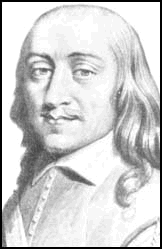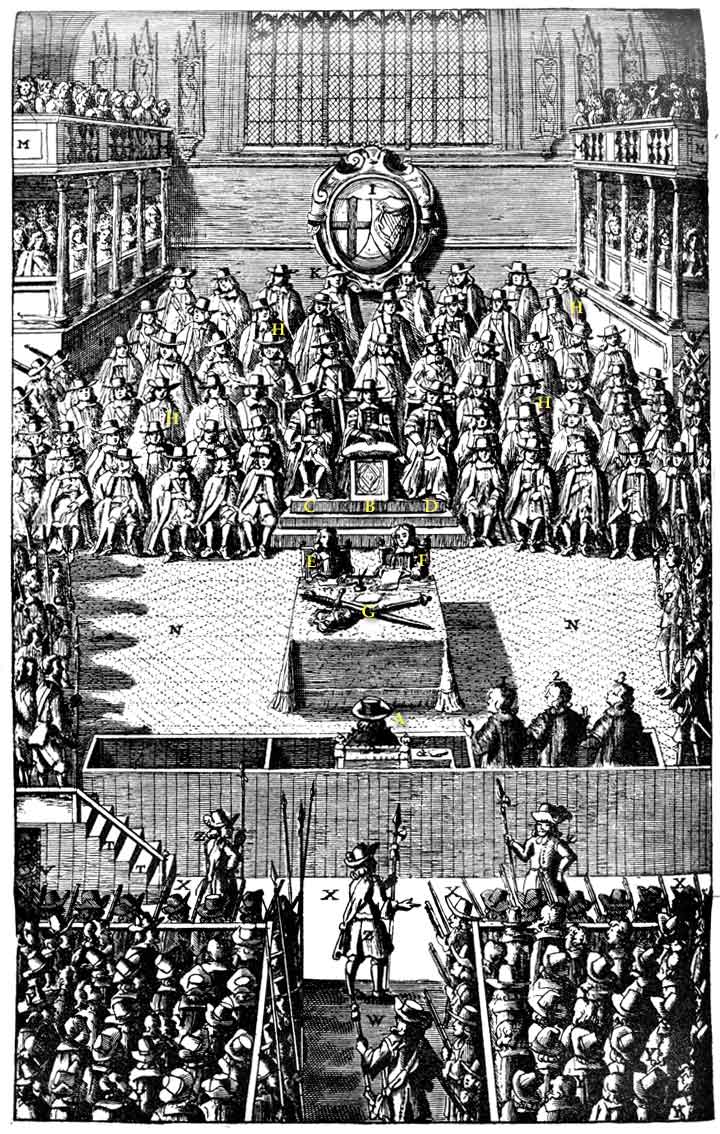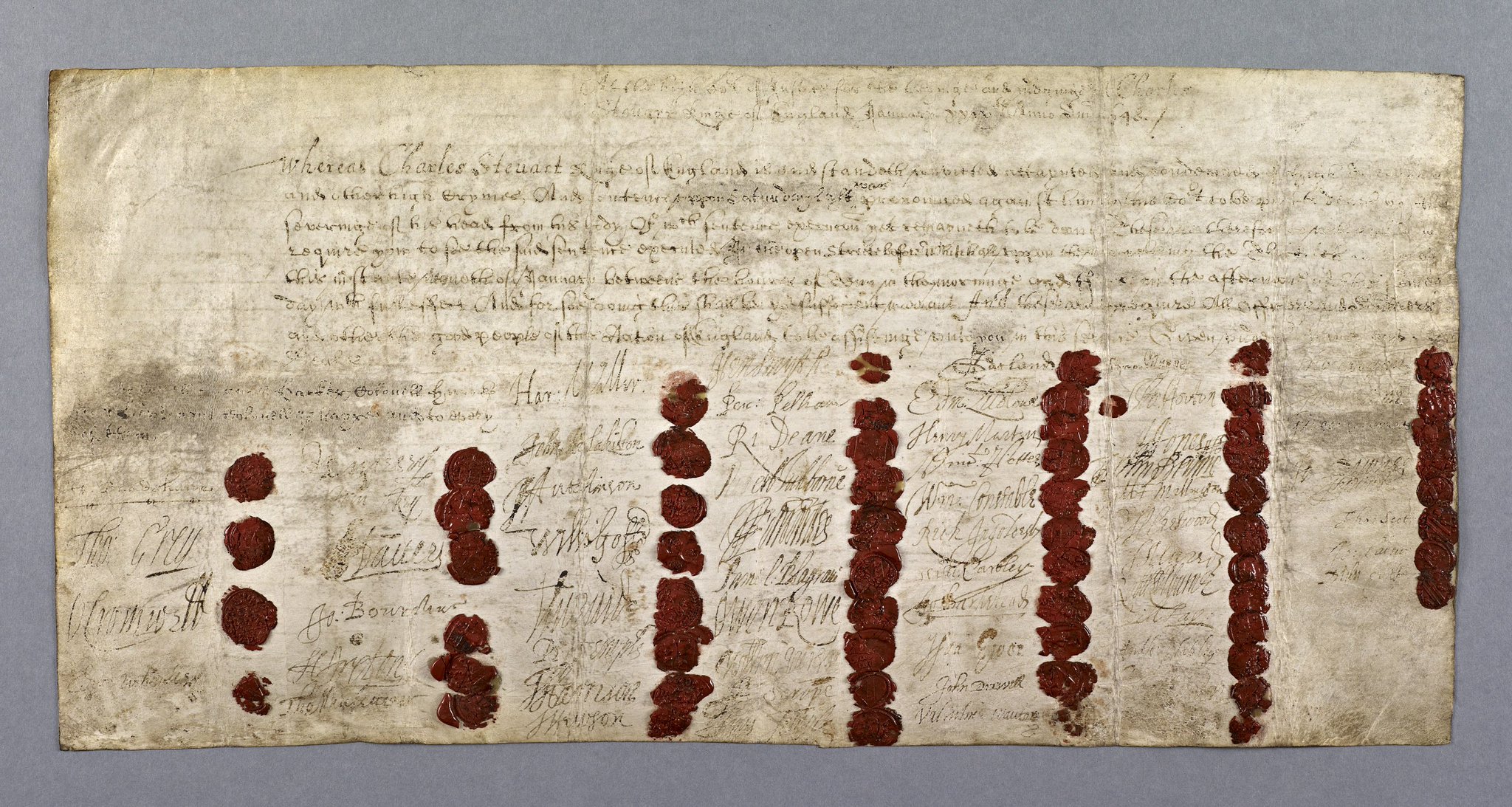|
Edward Whalley
Edward Whalley (c. 1607 – c. 1675) was an English military leader during the English Civil War and was one of the regicides who signed the death warrant of King Charles I of England. Early career The exact dates of his birth and death are unknown. He was the second son of Richard Whalley, who had been High Sheriff of Nottinghamshire in 1595, by his second wife Frances Cromwell, an aunt of Oliver Cromwell. His great-grandfather was Richard Whalley (1499–1583), a prominent adherent of Edward Seymour, 1st Duke of Somerset, and a Member of Parliament. Edward Whalley is said to have started out as a woollen-draper. During the 1620s and 1630s, he was a farmer in Chadwell St. Mary, Essex, but this farming venture turned out not to be a success. In 1639, Whalley was forced to flee to Scotland to escape from his creditors leaving his wife behind him. On the outbreak of the English Civil War, he took up arms for Parliament, and James Temple obtained a position for him as a cornet in ... [...More Info...] [...Related Items...] OR: [Wikipedia] [Google] [Baidu] |
James Temple
James Temple (1606–1680) was a puritan and English Civil War soldier who was convicted of the regicide of Charles I. Born in Rochester, Kent, to a well-connected gentry family, he was the second of two sons of Sir Alexander Temple, although his elder brother died in 1627. As a child, Temple moved with his father from Rochester to Chadwell St Mary in Essex and then to Etchingham in Sussex, where he settled. Temple gained military experience as a member of the Duke of Buckingham's expedition to the Isle of Ré in 1627. As a puritan, he joined the Parliamentary army at the outbreak of the Civil War and fought at the Battle of Edgehill. He rose to become a colonel and commanded Tilbury Fort, an important defensive position on the approach to London by river. He was elected as a Member of Parliament (MP) for Bramber in September 1645 to replace an ejected Royalist. He sided with the army in opposing any compromise with the King, and was appointed as a judge at the trial of King ... [...More Info...] [...Related Items...] OR: [Wikipedia] [Google] [Baidu] |
England
England is a country that is part of the United Kingdom. It shares land borders with Wales to its west and Scotland to its north. The Irish Sea lies northwest and the Celtic Sea to the southwest. It is separated from continental Europe by the North Sea to the east and the English Channel to the south. The country covers five-eighths of the island of Great Britain, which lies in the North Atlantic, and includes over 100 smaller islands, such as the Isles of Scilly and the Isle of Wight. The area now called England was first inhabited by modern humans during the Upper Paleolithic period, but takes its name from the Angles, a Germanic tribe deriving its name from the Anglia peninsula, who settled during the 5th and 6th centuries. England became a unified state in the 10th century and has had a significant cultural and legal impact on the wider world since the Age of Discovery, which began during the 15th century. The English language, the Anglican Church, and Engli ... [...More Info...] [...Related Items...] OR: [Wikipedia] [Google] [Baidu] |
Battle Of Gainsborough
The Battle of Gainsborough was a battle in the First English Civil War, fought on 28 July 1643. The strategically important town of Gainsborough was a Royalist base used for harassing the Parliamentarians who were generally dominant in Lincolnshire, but was taken by Parliamentarians in July 1643. An attempt to recapture Gainsborough by Charles Cavendish (general, died 1643), Charles Cavendish and the Royalists was foiled in a battle in which Oliver Cromwell, Colonel Oliver Cromwell distinguished himself as a cavalry leader. Prelude When the English Civil War was declared, Gainsborough, Lincolnshire, Gainsborough in Lincolnshire lay in an area which supported Roundhead, Parliament, but the town itself had Cavalier, Royalist sympathies. The town was of strategic importance to both sides, sited as it was on a crossing of the River Trent and lying on important roads leading north and south. In March 1643, Sir John Henderson sent a raiding party from the Royalist base at Newark- ... [...More Info...] [...Related Items...] OR: [Wikipedia] [Google] [Baidu] |
Court-martial
A court-martial or court martial (plural ''courts-martial'' or ''courts martial'', as "martial" is a postpositive adjective) is a military court or a trial conducted in such a court. A court-martial is empowered to determine the guilt of members of the armed forces subject to military law, and, if the defendant is found guilty, to decide upon punishment. In addition, courts-martial may be used to try prisoners of war for war crimes. The Geneva Conventions require that POWs who are on trial for war crimes be subject to the same procedures as would be the holding military's own forces. Finally, courts-martial can be convened for other purposes, such as dealing with violations of martial law, and can involve civilian defendants. Most navies have a standard court-martial which convenes whenever a ship is lost; this does not presume that the captain is suspected of wrongdoing, but merely that the circumstances surrounding the loss of the ship be made part of the official record. M ... [...More Info...] [...Related Items...] OR: [Wikipedia] [Google] [Baidu] |
Levellers
The Levellers were a political movement active during the Wars of the Three Kingdoms who were committed to popular sovereignty, extended suffrage, equality before the law and religious tolerance. The hallmark of Leveller thought was its populism, as shown by its emphasis on equal natural rights, and their practice of reaching the public through pamphlets, petitions and vocal appeals to the crowd. The Levellers came to prominence at the end of the First English Civil War (1642–1646) and were most influential before the start of the Second Civil War (1648–49). Leveller views and support were found in the populace of the City of London and in some regiments in the New Model Army. Their ideas were presented in their manifesto " Agreement of the People". In contrast to the Diggers, the Levellers opposed common ownership, except in cases of mutual agreement of the property owners. They were organised at the national level, with offices in a number of London inns and taverns such ... [...More Info...] [...Related Items...] OR: [Wikipedia] [Google] [Baidu] |
Bishopsgate Mutiny
The Bishopsgate mutiny occurred in April 1649 when soldiers of Colonel Edward Whalley's regiment of the New Model Army refused to obey orders and leave London. At the end of the mutiny one soldier, a supporter of the Levellers, Robert Lockyer, was executed by firing squad. In January 1649 Charles I of England was tried and executed for treason against the people. In February the Grandees (senior officers) banned petitions to Parliament by soldiers. In March eight Leveller troopers went to the Commander-in-Chief of the New Model Army, Lord Thomas Fairfax, and demanded the restoration of the right to petition. Five of them were cashiered out of the army. 300 infantrymen of Colonel John Hewson's regiment, who declared that they would not serve in Ireland until the Leveller programme had been realised, were cashiered without arrears of pay, which was the threat that had been used to quell the Corkbush Field mutiny. When Soldiers of the regiment of Colonel Edward Whalley stationed i ... [...More Info...] [...Related Items...] OR: [Wikipedia] [Google] [Baidu] |
Regicide
Regicide is the purposeful killing of a monarch or sovereign of a polity and is often associated with the usurpation of power. A regicide can also be the person responsible for the killing. The word comes from the Latin roots of ''regis'' and ''cida'' (''cidium''), meaning "of monarch" and "killer" respectively. In the British tradition, it refers to the judicial execution of a king after a trial, reflecting the historical precedent of the trial and execution of Charles I of England. The concept of regicide has also been explored in media and the arts through pieces like ''Macbeth'' (Macbeth's killing of King Duncan) and ''The Lion King''. History In Western Christianity, regicide was far more common prior to 1200/1300. Sverre Bagge counts 20 cases of regicide between 1200 and 1800, which means that 6% of monarchs were killed by their subjects. He counts 94 cases of regicide between 600 and 1200, which means that 21.8% of monarchs were killed by their subjects. He argues ... [...More Info...] [...Related Items...] OR: [Wikipedia] [Google] [Baidu] |
High Court Of Justice For The Trial Of Charles I
The High Court of Justice was the court established by the Rump Parliament to try Charles I, King of England, Scotland and Ireland. Even though this was an ''ad hoc'' tribunal that was specifically created for the purpose of trying the king, its name was eventually used by the government as a designation for subsequent courts. Background The English Civil War had been raging for nearly an entire decade. After the First English Civil War, the parliamentarians accepted the premise that the King, although wrong, had been able to justify his fight, and that he would still be entitled to limited powers as King under a new constitutional settlement. By provoking the Second English Civil War even while defeated and in captivity, Charles was held responsible for unjustifiable bloodshed. The secret "Engagement" treaty with the Scots was considered particularly unpardonable; "a more prodigious treason", said Oliver Cromwell, "than any that had been perfected before; because the former qu ... [...More Info...] [...Related Items...] OR: [Wikipedia] [Google] [Baidu] |
List Of Regicides Of Charles I
Following the trial of Charles I in January 1649, 59 commissioners (judges) signed his death warrant. They, along with several key associates and numerous court officials, were the subject of punishment following the restoration of the monarchy in 1660 with the coronation of Charles II. Charles I's trial and execution had followed the second English Civil War in which his supporters, Royalist "Cavaliers", were opposed by the Parliamentarian "Roundheads", led by Oliver Cromwell. With the return of Charles II, Parliament passed the Indemnity and Oblivion Act (1660), which granted amnesty to those guilty of most crimes committed during the Civil War and the Interregnum. Of those who had been involved in the trial and execution, 104 were specifically excluded from reprieve, although 24 had already died, including Cromwell, John Bradshaw (the judge who was president of the court), and Henry Ireton (a general in the Parliamentary army and Cromwell's son-in-law). They were giv ... [...More Info...] [...Related Items...] OR: [Wikipedia] [Google] [Baidu] |
Second English Civil War
The Second English Civil War took place between February to August 1648 in Kingdom of England, England and Wales. It forms part of the series of conflicts known collectively as the 1639-1651 Wars of the Three Kingdoms, which include the 1641–1653 Irish Confederate Wars, the 1639-1640 Bishops' Wars, and the 1649–1653 Cromwellian conquest of Ireland. Following his defeat in the First English Civil War, in May 1646 Charles I of England, Charles I surrendered to the Scots Covenanters, rather than Parliament of England, Parliament. By doing so, he hoped to exploit divisions between English and Scots Presbyterian polity, Presbyterians, and English Independent (religion), Independents. At this stage, all parties expected Charles to continue as king, which combined with their internal divisions, allowed him to refuse significant concessions. When the Presbyterian majority in Parliament failed to dissolve the New Model Army in late 1647, many joined with the Scottish Engagers in an ... [...More Info...] [...Related Items...] OR: [Wikipedia] [Google] [Baidu] |
Hampton Court Palace
Hampton Court Palace is a Grade I listed royal palace in the London Borough of Richmond upon Thames, southwest and upstream of central London on the River Thames. The building of the palace began in 1514 for Cardinal Thomas Wolsey, the chief minister of Henry VIII. In 1529, as Wolsey fell from favour, the cardinal gave the palace to the king to check his disgrace. The palace went on to become one of Henry's most favoured residences; soon after acquiring the property, he arranged for it to be enlarged so that it might more easily accommodate his sizeable retinue of courtiers. Along with St James' Palace, it is one of only two surviving palaces out of the many the king owned. The palace is currently in the possession of King Charles III and the Crown. In the following century, King William III's massive rebuilding and expansion work, which was intended to rival the Palace of Versailles, destroyed much of the Tudor palace.Dynes, p. 90. His work ceased in 1694, leaving the pa ... [...More Info...] [...Related Items...] OR: [Wikipedia] [Google] [Baidu] |
Richard Baxter
Richard Baxter (12 November 1615 – 8 December 1691) was an English Puritan church leader, poet, hymnodist, theologian, and controversialist. Dean Stanley called him "the chief of English Protestant Schoolmen". After some false starts, he made his reputation by his ministry at Kidderminster in Worcestershire, and at around the same time began a long and prolific career as theological writer. After the Restoration he refused preferment, while retaining a non-separatist Presbyterian approach, and became one of the most influential leaders of the Nonconformists, spending time in prison. His views on justification and sanctification are somewhat controversial and unconventional within the Calvinist tradition because his teachings seem, to some, to undermine salvation by faith, in that he emphasizes the necessity of repentance and faithfulness. Early life and education Baxter was born at Rowton, Shropshire, at the house of his maternal grandfather (probably on 12 November 1615 ... [...More Info...] [...Related Items...] OR: [Wikipedia] [Google] [Baidu] |










